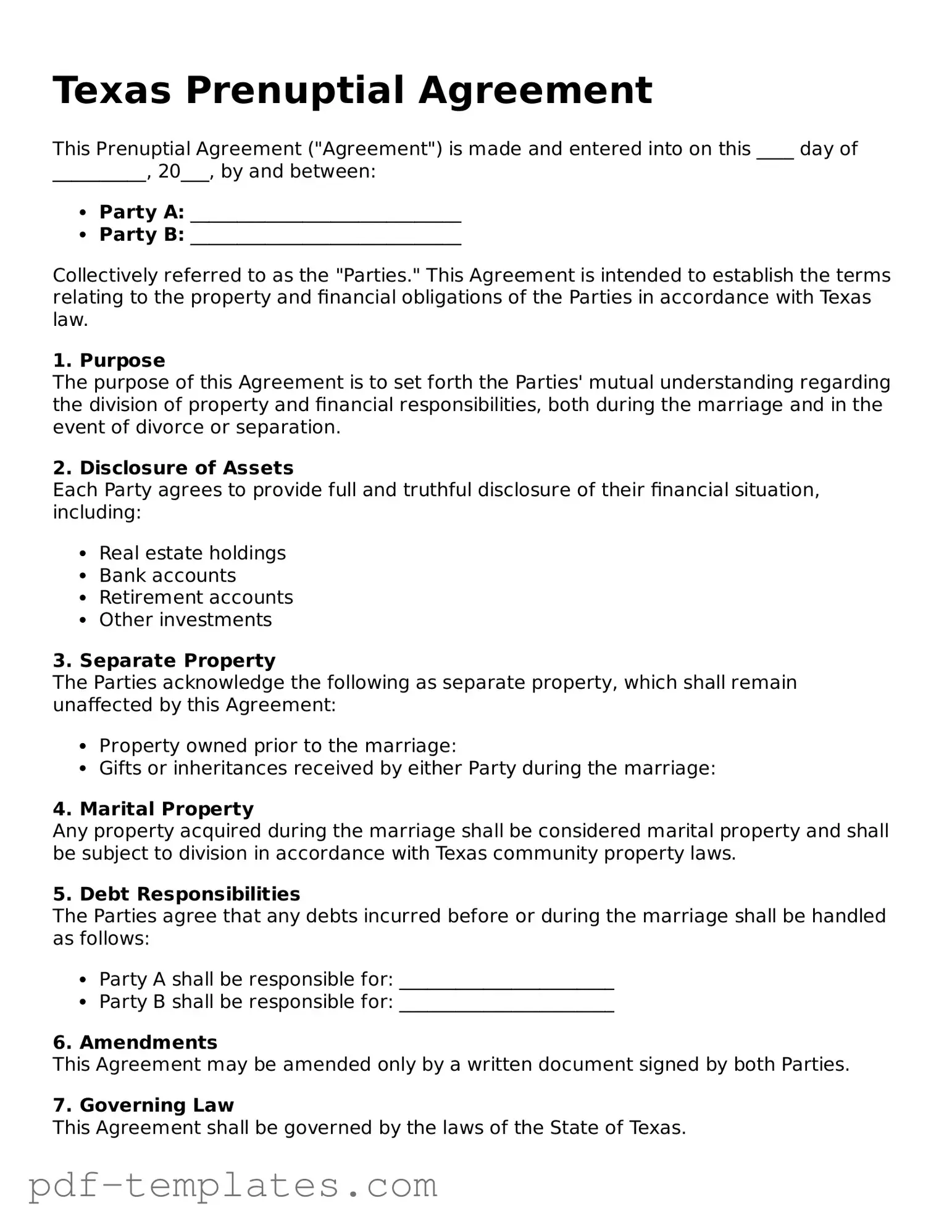A Cohabitation Agreement is similar to a prenuptial agreement in that it outlines the rights and responsibilities of two individuals living together. While a prenuptial agreement is typically used before marriage, a cohabitation agreement is designed for couples who choose to live together without formalizing their relationship through marriage. Both documents can address issues such as property division, financial responsibilities, and support obligations, helping to clarify expectations and protect both parties in the event of a separation.
A Postnuptial Agreement serves a similar purpose to a prenuptial agreement but is created after a couple is already married. Like a prenuptial agreement, a postnuptial agreement can detail how assets will be divided in case of divorce or separation. It may also address financial responsibilities and support arrangements. Couples often use this document to clarify financial matters that may have arisen during their marriage, providing peace of mind and reducing potential conflicts.
A Marriage Settlement Agreement is closely related to a prenuptial agreement, as it is often used to finalize the terms of a divorce. This document outlines how assets and debts will be divided, as well as any arrangements for child custody and support. While a prenuptial agreement is created before marriage, a marriage settlement agreement is negotiated after a couple has decided to end their marriage. Both documents aim to protect the interests of each party and provide clarity regarding financial matters.
A Trust Agreement can also be compared to a prenuptial agreement, especially when it comes to protecting assets. A trust agreement allows individuals to place their assets into a trust, which can then be managed for their benefit or the benefit of their heirs. Similar to a prenuptial agreement, a trust agreement can help ensure that specific assets are safeguarded from division during a divorce, providing a level of security for the individuals involved.
A Will is another important document that can be likened to a prenuptial agreement. While a prenuptial agreement focuses on financial matters during a marriage or partnership, a will addresses how an individual's assets will be distributed upon their death. Both documents serve to protect the interests of the individual and their loved ones, ensuring that their wishes are respected regarding asset distribution and minimizing potential disputes among heirs.
A Business Partnership Agreement shares similarities with a prenuptial agreement in the sense that it outlines the terms of a partnership between two or more individuals. This document can specify how profits and losses will be shared, the roles of each partner, and what happens if one partner decides to leave the business. Just as a prenuptial agreement protects personal assets, a business partnership agreement protects the interests of the partners involved in the business venture.
The Request for Authorization for Medical Treatment (DWC Form RFA) serves as an essential tool in navigating the complexities of workers' compensation, ensuring that employees receive the necessary medical support after an occupational injury or illness. By requiring the submission of relevant medical documentation, the form helps streamline the approval process for treatment, facilitating timely assistance for those affected. To explore more resources related to this form, including various guidelines and templates, please visit All California Forms.
A Child Custody Agreement is another document that can be compared to a prenuptial agreement. While the latter focuses on financial matters, a child custody agreement addresses the care and custody of children in the event of a separation or divorce. Both documents aim to provide clarity and structure, helping to minimize disputes and ensure that the rights and responsibilities of each party are clearly defined.
A Living Trust can be seen as a counterpart to a prenuptial agreement, particularly regarding asset protection. A living trust allows individuals to manage their assets during their lifetime and dictate how those assets will be distributed after their death. Like a prenuptial agreement, a living trust can help safeguard assets from potential claims during a divorce, ensuring that specific assets remain protected and are passed on according to the individual’s wishes.
Finally, a Non-Disclosure Agreement (NDA) can be related to a prenuptial agreement in terms of confidentiality. An NDA is often used to protect sensitive information shared between parties. In the context of a prenuptial agreement, confidentiality clauses may be included to protect the financial information and personal details of each party. Both documents emphasize the importance of privacy and trust in relationships, whether personal or professional.
